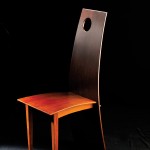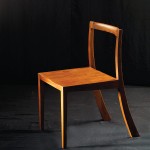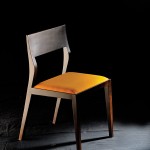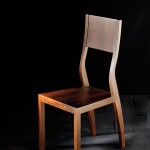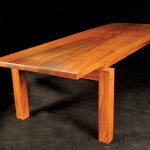-
Rangi Basnayake: The Freedom to Explore Nature
October 2010
By: Amanda Rajakaruna
“I rarely imitate existing furniture designed by other people but innovate something new, which is a unique answer to the problem in hand.”
Apart from being brought up in a design background, simple experiences of camping in Sri Lanka’s forest reserves as a child has made Rangi Basnayake who she is today. A talented furniture designer, specialising in ergonomic custom pieces for her clients, Rangi recalls her first experience of being inspired to be a designer, to be in the middle of a forest where she helped set up very basic, temporary yet functional furniture out of wooden sticks and boulders.

“It is mainly the freedom I had to explore nature and do adventurous things such as hiking, camping, swimming across rivers, getting lost in Horton plains, as a small child, which made me who I am today..” mused Rangi.
Primarily educated at Musaeus College, Colombo, Rangi completed her Bachelor of Design Degree specialising in Furniture Design, at the University of Moratuwa in 2005 and from there on proceeded to La Salle College of Arts, Singapore to complete her Masters in Product Design. “I formed this company with another two partners. KIMA is an associate company of Aashkii,” explains Rangi.
When asked what she enjoyed most about Furniture Design, Rangi’s answer was that working in a small scale was most exciting.
“Designing a piece of furniture is more personal than doing an interior or a building. You have to be concerned about the body shape, ergonomics and many small details for the design to be a success,” she explains.
Furniture Design was not Rangi’s childhood dream. Instead, her dreams lay in selecting a profession where she had the freedom and flexibility to enjoy her creativity, and entered the University of Moratuwa to pursue a degree in Design.
Ironically, Rangi did not have an inclination towards Furniture Design, and the only reason she chose furniture as opposed to jewellery or ceramics was because she believes that design should be functional.
According to Rangi, her main ‘passion’ for furniture design was evoked subsequently when, as a young graduate, she worked with experienced furniture designers, in Bangalore. Elaborating further, “their design processes were much intense than the processes I had seen in Sri Lanka and I was fascinated about the way they work on actual size models and fine tune the designs on prototypes…”
Rangi’s favourite part about conceptualising a design lies in interpreting the client’s requirements and producing a unique and personalised 3D form. She takes pride in designing specialised individual pieces, which is more challenging.
“I rarely imitate existing furniture designed by other people but innovate something new, which is a unique answer to the problem in hand.”
While some designs are conceptualised in a matter of hours to a day, there are still some that take months. Describing her process of design, Rangi explains that she always begins with the basics; understanding the client’s purpose and requirement and from there on proceeds with a rough sketch and a 3D visual. Once satisfied with the aesthetics of the design, the technical process of designing commences with the preparation of drawings and along with her prototype team, a life size drawing of the design is produced. With the use of a special device at the factory (which checks angles and curves), the design is checked thoroughly ergonomically, and necessary adjustments are made. To further check the design, an actual sized prototype is fabricated using cheap timber, and upon approval is sent for production.
“If there is room for development, the changes are done on the prototype, or sometimes we need to do a new one. This tiring process can go on for a long time. I remember one instance where we did 6 prototypes before finalising…”
Amongst a lot of things, Rangi is grateful to have a really dynamic prototyping team with good carpenters. She states, “not that everyone likes to make and break the same chair six times- especially if you are a skilled and experienced carpenter.”
In Rangi’s opinion, the future of this field lies in sustainable furniture, where the main concern is based on reducing, re-using and recycling a material, getting maximum use of it.
“Sustainable furniture does not have to be timber always… Reusing of non-conventional material and finding new ways of using material is one of the main concerns at present”, she adds.
When asked if she could take her art in any direction without failure or rejection, Rangi says she wants to try new non-conventional materials for furniture manufacturing, experimenting with new means of using a material in order to reduce the timber wastage in today’s furniture industry.
Currently Rangi Basnayaka is working on a project which understands the real Sri Lankan Ergonomic Standards for furniture, since the existing standards are either British or American, and do not fit the average Sri Lankan body.
“Most of the people here are not used to the idea of specially designed furniture and they don’t even realise that the chair they are seated in is uncomfortable!” says Rangi.
While the final appearance of the product is important, Rangi’s designs are more concerned with ergonomic properties, which ensure comfort to its user!

